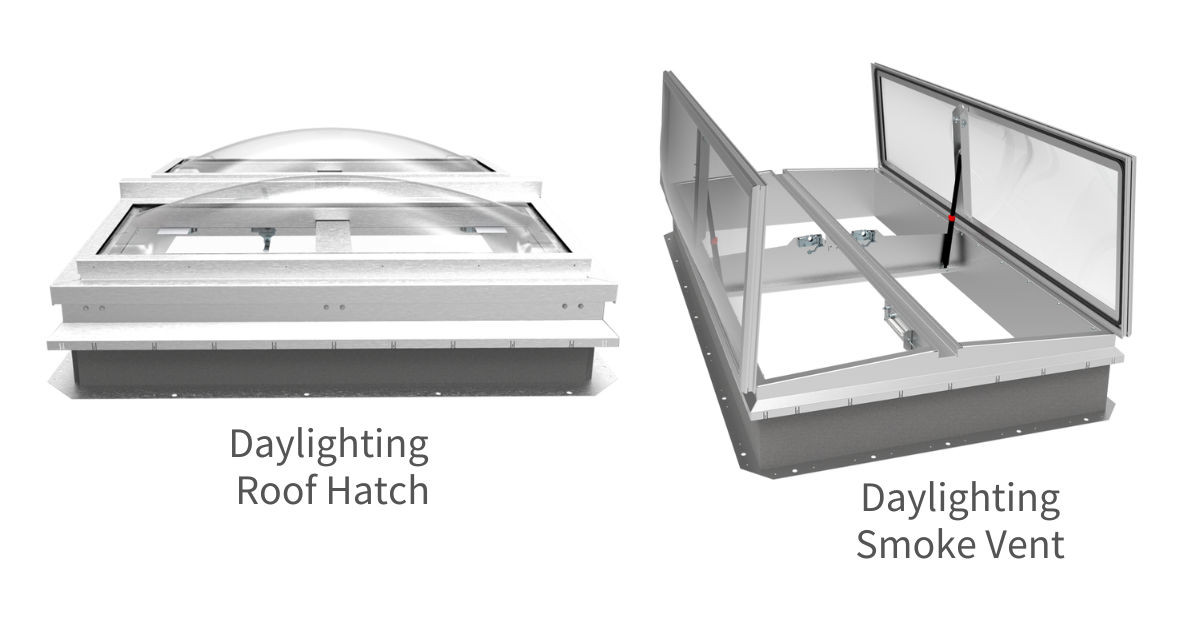A New Frontier in Green Building Design
.png)
The Impact of Daylighting on Air Quality & Bacterial Growth
In recent years, the construction industry has witnessed a significant shift towards more sustainable and environmentally friendly practices. As part of this movement, the installation of glazed roof hatches and smoke vents has gained popularity, with Nystrom standing as a recognized industry leader in manufacturing these innovative solutions. This trend towards daylighting – the practice of incorporating natural sunlight into indoor spaces – has been fueled by a combination of factors, including the desire to reduce electricity dependence, enhance worker well-being, and contribute to overall green efforts. One intriguing dimension of this movement involves its impact on indoor air quality, a topic explored in a groundbreaking study conducted by the University of Oregon and highlighted in an NPR article authored by Kathleen O’Neil.
Daylighting & the Green Connection
As the world becomes more conscious of the need for sustainable practices, incorporating daylighting strategies into building design offers a dual benefit. On one hand, the reduction in reliance on electric lighting directly contributes to energy conservation and a smaller carbon footprint. On the other, exposure to natural light has been linked to a variety of health and well-being improvements, including enhanced worker morale and productivity. The positive impact of daylighting on these aspects has been widely discussed in the context of green building practices, but a recent study suggests that the benefits extend even further to influence indoor air quality.
The Study: Linking Daylighting to Air Quality
The University of Oregon study titled "Daylight exposure modulates bacterial communities associated with household dust" has provided a new perspective on the relationship between daylighting and air quality. Conducted by researchers including Kevin Van Den Wymelenberg, the study delves into the effects of natural light on indoor bacterial growth. The researchers collected dust samples from various spaces exposed to differing levels of light. The results demonstrated a significant correlation between light exposure and bacterial growth in indoor environments.
The study's findings highlight a captivating discovery – rooms with ample natural light were found to be almost twice as unlikely to foster bacterial growth compared to darker spaces. Moreover, the research found that certain types of bacteria, particularly those linked to respiratory diseases, struggled to survive in well-lit environments. This raises the exciting possibility that daylighting could play a key role in improving indoor air quality, consequently promoting the health and well-being of building occupants.
Kevin Van Den Wymelenberg's commentary underscores the shift in how daylighting is perceived. While it has traditionally been associated with visual comfort and broad health benefits, this study's findings allow us to assert that daylighting also exerts a tangible influence on air quality. This knowledge further solidifies the argument for integrating natural light into building designs not only for its aesthetic and energy-saving advantages but also for its potential to contribute to healthier indoor environments.
Future Prospects and Further Research
While this study marks a significant step forward in understanding the connection between daylighting and air quality, there remains ample room for additional research. One avenue worth exploring involves the utilization of materials such as polycarbonate domes and multiwall panels. These materials may amplify the positive effects of daylighting by enhancing the distribution of natural light while also potentially introducing the benefits of UV exposure, which has been associated with germicidal properties. Future investigations could delve into the specific benefits of different materials and their contributions to indoor air quality enhancement.
Conclusion
The fusion of sustainable building practices and scientific research has unveiled a new dimension of daylighting's impact. As the construction industry continues to embrace greener methodologies, the connection between natural light, air quality, and occupant health comes into sharper focus. Nystrom's innovative roof hatches and smoke vents represent not only a response to green efforts but also a conduit for enhancing indoor environments through daylighting. The University of Oregon's pioneering study serves as a catalyst for redefining the scope of daylighting's benefits, and future research promises to unveil even more about this exciting intersection of design, sustainability, and well-being.
For more information on how Nystrom can help you on your next roof hatch or smoke vent project, visit our website.





